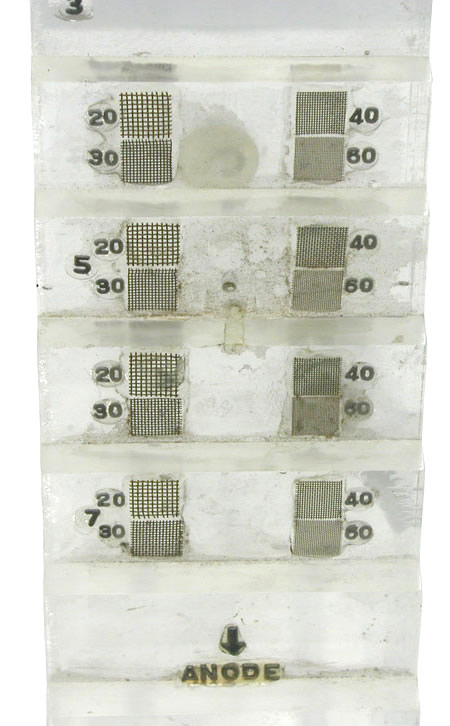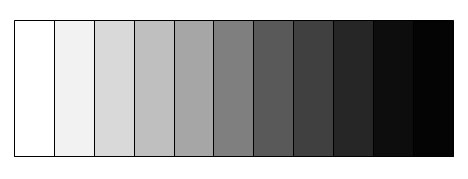Plastic Stepwedge (ca. 1950s, 1960s?)

A stepwedge (or step wedge) is used for quality control in radiology, and photography in general, to help assess the impact that changes in exposure parameters might have on the radiographic image. These changes might involve the quality of the solutions used for film processing, the tube current, voltage, a change in the batch of film, source-to-image distance, etc. These devices are also known as penetrometers.

When an image of the stepwedge is viewed, a full range of intensities should be seen, from a light grey at one end to almost black at the other. A simple visual assessment might be performed by eyeballing it. Even better, a quantitative assessment might be performed with a densitometer. In this case, the image of the middle step (assuming a classic eleven step device) should have an optical density of 1.2 or so. If it didn't, the exposure factors would need to be tweaked. A good looking result would be similar to what is shown at the bottom of this page.
I would guess that this example was home-made as there are no markings to indicate a manufacturer. It consists of ten half-inch thick steps mounted on a one-inch base. While most stepwedges are made of aluminum, this one appears to be Plexiglas.

This one also has four screens on each step that could help assess the image's resolution for various thicknesses of tissue.
Size: The one inch thick base is 4" x 19" and the total height is 6"
